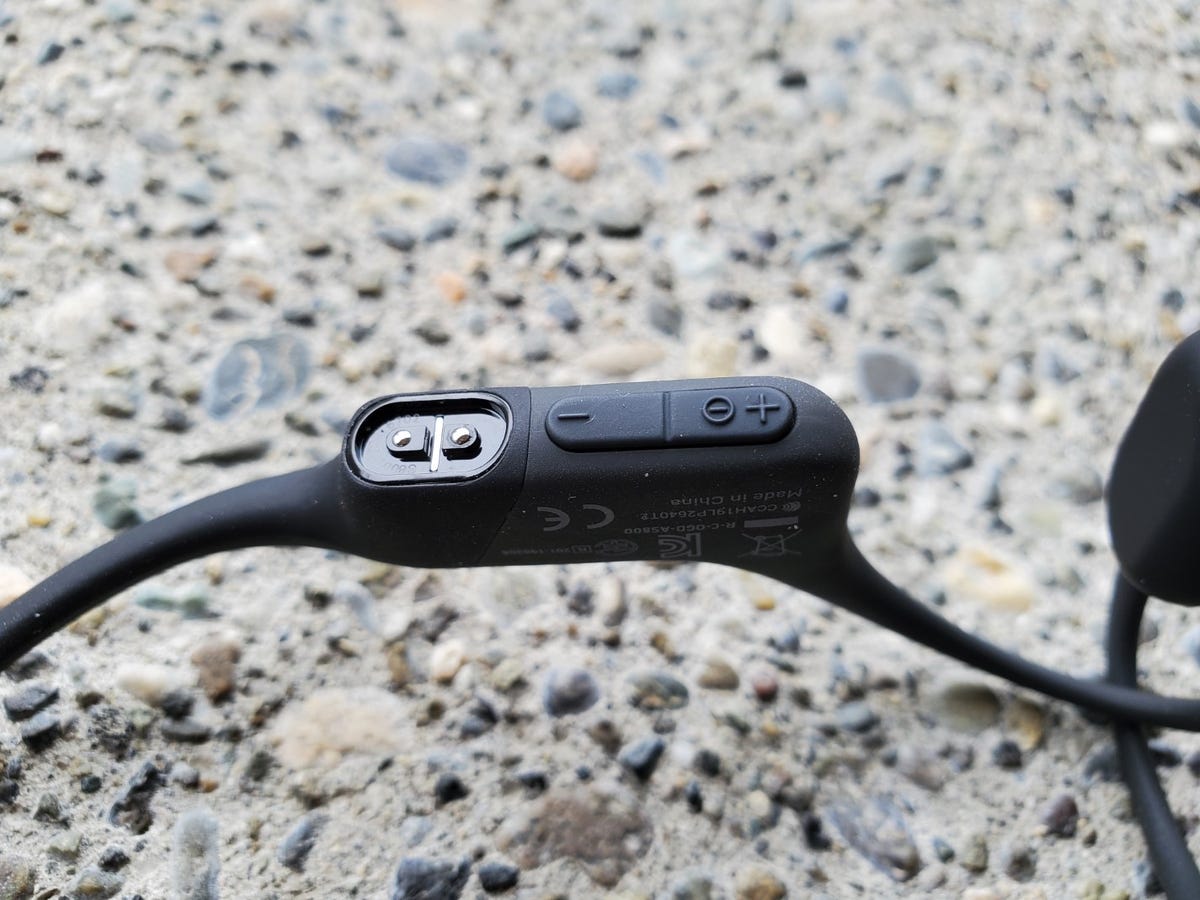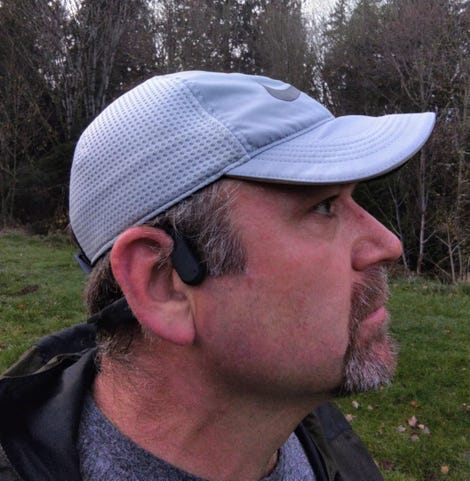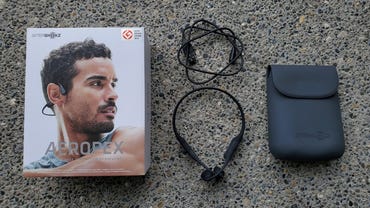AfterShokz Aeropex review: Impressive bone conduction headset with long battery life, solid performance
While I test a lot of headsets while running, I always go back to using bone conduction headsets so that my ears are open for safety reasons. With darkness surrounding me and the rain beating me down, bone conduction headsets are essential for my winter running sessions. For the past month, I’ve been running with the
AfterShokz Aeropex
and I’ve been extremely pleased with their performance.
The Aeropex retail price is $159.95, but there is currently a $30 off sale, so the price is $129.95. They are available in Cosmic Black, Blue Eclipse, Solar Red, and Lunar Grey. I tested the standard size Cosmic Black set.
I first tried out AfterShokz bone conduction technology with the Trekz Air in 2018, and over the past year, I tried out a couple of other options from competitors. With the Aeropex over my ears blasting classic rock, it is clear that AfterShokz sets the bar when it comes to bone conduction headphones optimized for working out.
See also: The best headphones: Workout and running.
Like
- Comfortable and secure fit
- Improved physical buttons
- IP67 dust/water resistance
- 8-hour battery life
- Ears remain open for safety
Don’t Like
The Aeropex headset is using 8th generation bone conduction technology from AfterShokz, and it is clear the company has worked hard to provide an excellent audio experience. There is also a bit of tradeoff in audio performance with bone conduction when compared to standard headsets that go in, on, or over your ears. However, the volume, clarity, and overall experience provided by the Aeropex is perfect for me. I ran in a Ragnar trail race on Mt Rainier this summer and used the
Trekz Air
to keep me going since that is the only headset type allowed as it keeps your ears open to the environment around you.
Hardware
The retail package includes the headset, silicone carrying case with magnetic clasp, earplugs, and two magnetic charging cables. The inclusion of two cables is a nice touch and means I can keep one in my travel bag and the other at home since I enjoy running when I travel.
The headset has a matte finish with a titanium frame holding the pieces together, so you get a lightweight and comfortable fit. There is zero pressure or discomfort caused by extended wear of the headset.
One aspect of the Trekz Air that I did not like was the tiny buttons and small port cover to access the microUSB port for charging the headset. On the Aeropex, we find two large buttons under the right side and a magnetic induction cable. This charging mechanism may also help keep the headset reliable for years since there is no opening for water to get into the headset. There is also a large button on the outside of the left side that fits over your ear. Controls are simple and easy with the Aeropex, a vast improvement over the Trekz Air.

The large multifunction button is used to play/pause music, skip to the next song, go back to the previous song, answer/end calls, reject calls, redial the last number, and launch your preferred device voice assistant. The power and volume buttons obviously control power and volume, but also mute calls, change equalizer settings, and check battery status.
AfterShokz advertises up to eight hours of battery life, and that matches my experiences. I typically go for three to four runs and wear them on a couple of commutes before charging up the headset. While they have an IP67 dust/water resistant rating, they are not designed for swimming.
The Aeropex also supports multipoint pairing so you can connect to two devices at once, which is useful if you want to connect to a phone and a watch or a phone and a tablet at the same time and then flip between the two as needed.
Specifications
- Microphones: Dual noise-canceling mic
- Dust/water resistance: IP67 rating
- Battery life: Up to 8 hours of play. Two hours to charge up the headset using a magnetic induction cable.
- Wireless connectivity: Bluetooth 5.0
- Earbud weight: 26 grams
Daily usage experiences and conclusions
There are several reasons I prefer using the AfterShokz Aeropex over standard earbuds, including the fact that they never fall out of your ears no matter how much you shake, rattle, and roll when you workout. The headset easily lasts for up to eight hours for playback, allows my ears to remain open to hear my surroundings, and never disturbs the people around me. At first, I only used them for running, but have since adopted them for my commute since I can sit on the train and listen to music, podcasts, and video without others on the train hearing anything. A friend actually recommended also using them on an airplane, in combination with the included earplugs.

For running, I paired the headset with multiple Android phones and watches, including the
Garmin Forerunner 945 LTE
and
Coros Vertix 2
. Audio plays back perfectly every single time with no missed beats or skipping. The bass is actually decent with the headset, advertised as AfterShokz PremiumPitch 2.0. Being that I live in Washington State, I also spend a lot of time running in the rain, and the headset has performed flawlessly in these conditions.
Since my days of using the Trekz Air, the buttons have been improved, and this design improvement alone was enough to get me to recommend the Aeropex. However, I also like the longer battery life and improved audio performance.


Pingback: site indonesian mail order brides
Pingback: จํา นํา โฉนด ที่ดิน กับ ร้านทอง
Pingback: Get the facts
Pingback: Buy Cobra Two-Tone (38SPL) Online At Theblissfirearms.com
Pingback: Telegram中文
Pingback: UOD